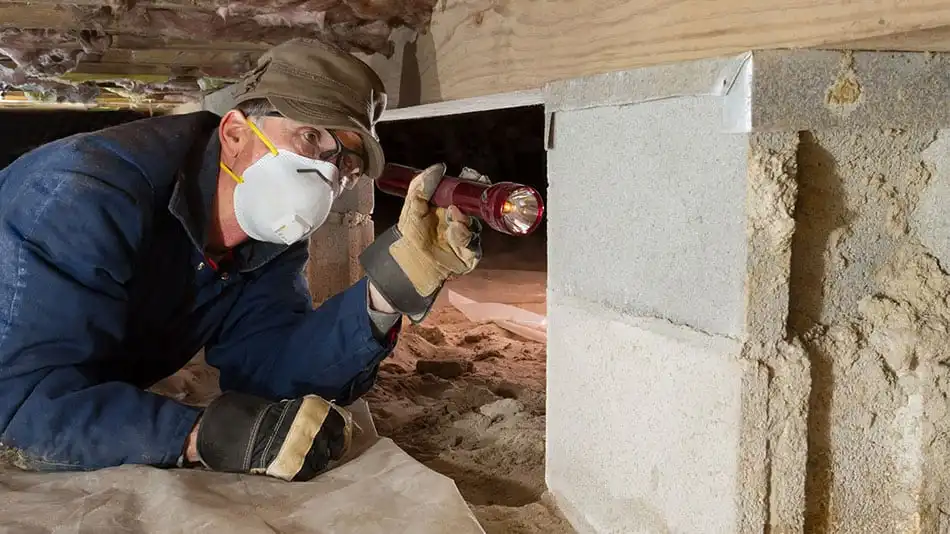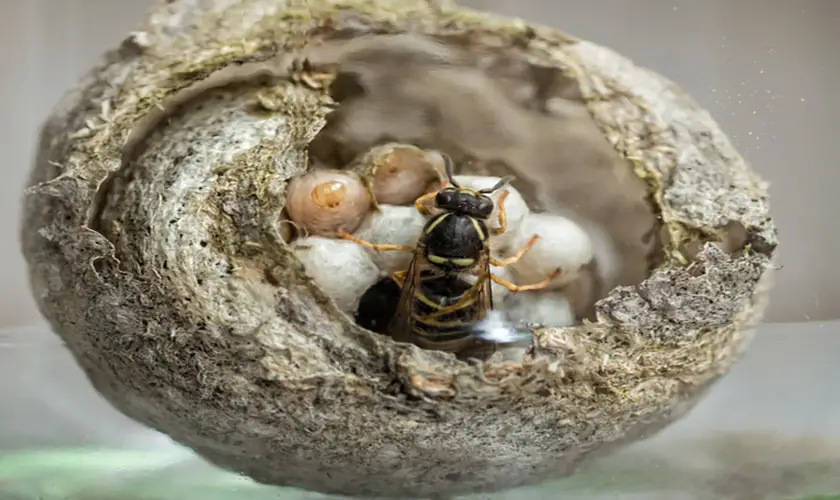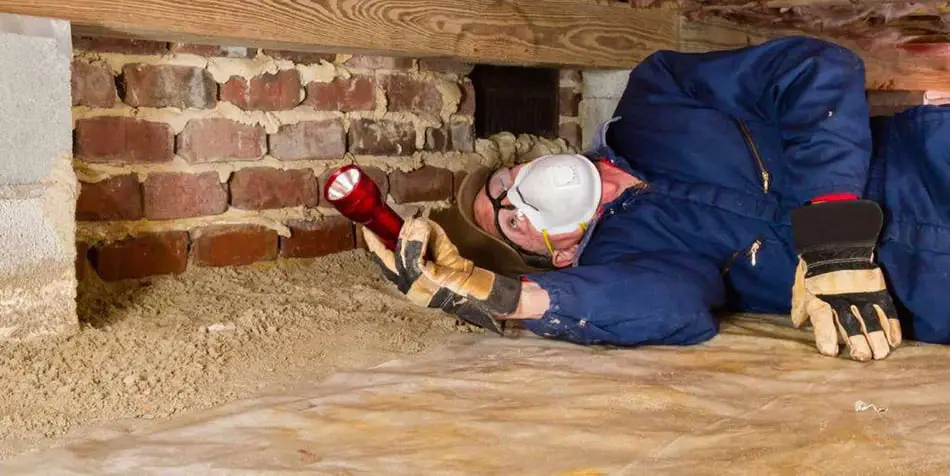
The main types of cockroaches commonly found in the US include the German cockroach, Oriental cockroach, Brown-banded cockroach, and American cockroach. The German cockroach is most frequently seen in food preparation areas, restaurants, cafeterias, kitchens, and toilets. Cockroaches are a health hazard, so keeping them out of living areas is vital.
The best cockroach repellents are essential oils and other plant derivatives, which have a natural aversion. These are oils of lemongrass, peppermint, clove, catnip, tea tree, oregano, yarrow, thyme, eucalyptus, and rosemary. Combined with good home hygiene, they should keep the creepers out.
To successfully keep cockroaches at bay, you must know your enemy. Pest control companies can help to eliminate severe infestations, but if your home remains cockroach heaven, they won’t be gone for long. The roach threatens human health by producing asthma-triggering allergens, carrying disease-causing antibiotic-resistant bugs, worms, and other organisms, and contributing to unhealthy indoor environments.
Get FREE quotes from licensed pest control technicians in your area today. Whether you need spraying for ants, roaches, spiders, ticks, mosquitos, or bed bugs, We Can Help! All technicians are screened, licensed, and insured.
What Are Cockroach Repellents
Repellents deter or discourage cockroaches from entering the home, and while some can also kill them, that is not their main intention. If you have a serious roach infestation, you need to call in pest control to eliminate as many of them as possible. Once this has been achieved, you would use repellants to keep them out.
Naphthalene has been one of the most common chemicals used as a cockroach repellent. However, it is hazardous to human health, and long-term exposure through inhalation, ingestion, or dermal contact, can result in hemolytic anemia, liver toxicity, or neurological damage in babies.
It is not feasible or in the best interests of your health to continually spray the insecticides around the house. If you do not have an infestation, it is much healthier to use repellents that keep them out. Although synthetic repellents tend to be more effective than natural repellents, the development of resistance has restricted the usefulness of synthetic repellents.
Certain areas such as kitchen counters, sinks, stoves, cupboards for the storage of cooking and eating utensils, towels, and clothing that comes into contact with human skin should never be treated with insecticides. This is when natural, non-toxic repellents come into their own.
Repellents can be used in cockroach pest management as barrier treatments to protect specific areas or commodities or as a means to roach-proof small, enclosed spaces such as closets, cabinets, wall voids, and shipping crates. Numerous studies have demonstrated the toxicity and repellency of essential oils against cockroaches.
Extensive research has shown that ultrasonic devices neither kill nor repel cockroaches.
Plant-Based Roach Repellents
The table below indicates various cockroach repellents and their effects. Where it states “in particular,” there has been a scientific study using the repellent on the type of cockroach named. It does not mean that the repellent can only be used for one cockroach, as studies have shown that a particular substance usually repels more than one type.
You can try any of the substances mentioned below, but some will be more effective than others, and not all of them may be readily available.
| Repellent | Cockroach Type | Effects |
|---|---|---|
| Clove oil | German cockroaches (in particular) | It kills on contact and repels |
| Oregano oil | brown-banded cockroaches (in particular) | It kills on contact and repels 100% |
| Lemongrass oil | All German cockroaches (in particular) | It kills on contact and repels |
| Catnip oil | All | Kills and repels |
| Mint oil | Brown-banded, German and American cockroaches (in particular) | It kills on contact and repels |
| Peppermint oil | All | 100% repellency |
| Sesame oil | All | Repellent |
| Thyme oil | All | Repellent |
| Rosemary oil | All | It kills on contact and repels |
| Yarrow oil | Brown-banded (in particular) | Repellent |
| Eucalyptus oil | Brown-banded (in particular) | Repellent |
| Neem oil and powder | American cockroach (in particular) | It prevents breeding and repels |
| Brazilian pepper tree (Schinus Molle) | Oriental cockroach and German cockroach in particular | Repellent |
| Turmeric | American cockroach, in particular | Repellent |
| Chrysanthemum extract | All | It kills on contact and repels |
| Tea tree oil | All | Repellent |
| Garlic powder | All | Repellent |
| Makrut lime oil | American and German cockroaches in particular | 100% repellency |
Here is a video you can go by for more information on how to deter cockroaches from your home:
Understanding the Habits of Cockroaches
To use repellents effectively, you need to understand cockroaches. They are the hardiest insects on the planet, with some remaining active for a month without food. They can even survive decapitation for a couple of weeks; some can live without air for forty-five minutes. These days, they are also highly resistant to many synthetic poisons that previously killed them.
Some people say that using repellents may be more effective than trying to kill cockroaches because of their growing immunity to poisons. The German cockroach, in particular, is highly resistant to many insecticides.
Cockroaches are active at night. During the day, they remain hidden in cracks and other dark, secret areas. At night, they leave their hiding places in search of food. Cockroaches will eat all foods and many other things besides soap, toothpaste, glue, hair, excrement, and filth.
Your first sighting of a cockroach might be something scuttling for cover when you switch on the kitchen light. However, unlike other cockroaches, the oriental cockroach is attracted to light. If you shine a
To discourage cockroaches, it helps to know where they like to hide. Preferred hideouts are dark and moist in kitchens and bathrooms, but cockroaches may be found anywhere inside the home. It is best to apply repellents in or near their favorite spots, such as under household appliances, walls and floors intersect, and cracks and crevices.
A combination of techniques is the best way to control cockroaches. Since roaches flourish where food, moisture, and shelter are readily available, sanitation is essential in preventing and correcting problems.
Oriental Cockroaches
This cockroach is typically dark brown to reddish-brown and is less common than the German and brown-banded cockroach. It likes to hang out in sewers, drains, basements, cellars, and other cool, moist, dark places.
Oriental cockroaches eat just about anything – dog food, food crumbs, filth, garbage, and decaying organic matter like rotting vegetable peelings and fruit. They live in kitchen and bathroom cabinets that contain plumbing, sink drains, garbage disposals, and voids in walls or porches. Their bodies secrete a musty odor that can taint food and becomes very noticeable with large infestations.
Oriental roaches have smooth dark bodies that may be shiny black to dark reddish-brown and can’t fly. They depend heavily on water and can’t survive without it for more than two weeks. They like to live in damp areas and usually gain entry by following drains, sewers, and water pipes into a building.
One of the best ways to keep oriental cockroaches out is by sealing entry points around pipes, windows, and doors and eliminating standing water and other moisture sources in and around the house. Frequent vacuuming and keeping the kitchen free of food debris also help.
They can be repelled using oregano oil, which can kill them on contact or catnip, peppermint any of the other oils listed in the table above. You can also mix white vinegar and water and spray it around their living areas. Vinegar won’t kill them, but its acidity repels them. Mixing tea tree oil with vinegar and water is even more effective.
The German Cockroach
This cockroach is one of the worst pests worldwide and is small compared to other cockroaches. They gravitate to warm household appliances and can also be found in garbage bins, kitchen cabinets, and under sinks. They are highly resistant to many common pesticides and can be hard to eliminate, so it is worth using repellents to keep them at bay.
They are renowned for carrying bacteria, viruses, and other nasties harmful to human health. The German cockroach is omnivorous, eating table scraps, pet food, and even book bindings. The American cockroach feeds on various things, including bread, fruit, leather, the starch in book bindings, paper, glue, skin flakes, hair, dead insects, and soiled clothing.
In a 2012 scientific study, lemongrass essential oil at higher concentrations effectively killed German cockroaches. At lower concentrations, lemongrass essential oil acted as a repellent with 100% efficacy.
German cockroach strains used in the lemongrass study initially reacted with rapid and irregular movement when exposed to lemongrass essential oil during the repellency test. The cockroaches hurried through the test container’s treated area and tried to find a part where no essential oil had been applied.
In concentrations of 3% or more, mint oil was toxic and repellent to American and German cockroaches. One of the advantages of mint oil is that it vaporizes rapidly in an open environment and leaves little or no residue.
Other research has shown that Japanese mint and Scotch spearmint oils were the most repellents of some 80 essential oils tested against German cockroaches. Mint oil extract was almost 100% repellent to American and German cockroaches for fourteen days.
Brown Banded Cockroach
Brown-banded cockroaches are light brown and are named for the two brownish bands running across their wings and abdomen. Their favorite locations include electrical appliances, paintings, and other decorations on walls, hollow furniture, and clutter.
These scavengers eat anything organic, including human bodily fluids and decaying matter. They also eat glue or paste and starch, damaging wallpaper, books, stamps, and envelopes.
They carry bacteria and protozoa that cause disease, diarrhea, or gastroenteritis, and they can deposit these germs on food and utensils. Brown-banded roaches are reported to spread at least thirty-three kinds of bacteria. Also, they can cause allergic reactions and worsen asthma attacks, especially in children.
According to a scientific study in 2016 in laboratory conditions, oregano oil was the most potent repellent for brown-banded cockroaches. Rosemary oil was the most toxic to these roaches as it had a 100% mortality rate if the oil had a concentration of between 2.5% and 30%. Unfortunately, the roaches have to contact rosemary oil of a sufficiently high concentration for it to kill them.
American Cockroach
American cockroaches are the largest roaches you are likely to find in your house. They are reddish-brown with a lighter eight shaped pattern on the back of the ahead. They love to live in sewers, in basements, and around drains. These cockroaches will eat just about anything and have been known to bite feet and hands and chew on hair, skin flakes, and fingernails.
However, they mostly prefer to feed on dead things, garbage, and other filth. They transfer bacteria, parasitic worms, and other pathogens to humans by carrying them on their legs and bodies from sewage pipes and trash heaps onto human food and household surfaces. Human allergens build up in their skins, corpses, droppings, and secretions and are known to cause asthma in children.
In a 2013 laboratory study, researchers looked at the repellence and toxicity of clove and sesame oils to the American cockroach. Clove oil exhibited stronger repellent activity than sesame oil for adult cockroaches.
Both showed variable degrees of repellence depending on the oil concentration, the length of exposure, and the roach’s life stage. Cockroaches have various life stages before they become adults, and these are called nymphs.
Clove oil showed significant effects against American cockroach nymphs after twenty-four hours and against adults after forty-eight hours. The study concluded that both sesame and clove oils could be used as repellents and insecticides.
Other research has shown that lemongrass oil is also highly repellant against American cockroaches at concentrations between four and seven percent. Mint oil was the second most repellent, and eucalyptus oil was the least repellant out of the three oils studied. Male American cockroaches find mint oil 100% repellent.
One study found a mixture of rosemary essential oil and eucalyptus oil to have 100% repellency for German, brown-banded and American cockroaches. Another study in 2016 found that rosemary oil is one of the roaches’ most toxic essential oils. For rosemary oil to be effective, however, roaches must come into contact with it.

How To Use and Apply Repellents For Cockroaches
Most essential oils can be mixed with a carrier fluid, such as water, in a spray bottle. Some can be combined with acetone as a carrier, while others are mixed with olive oil or cheaper oil. Remember that acetone is highly flammable, so it may not be the best choice. Use three ounces of water for every 10 to 15 drops of oil unless you find a recipe that says otherwise.
Spray places where cockroaches are seen and leave for a week. It is best to choose which oil you will use and sprinkle it only rather than treating the area with various oils.
- Cockroaches hate peppermint and cedar oil. You can mix eight drops of cypress essential oil and ten drops of peppermint essential oil with half a cup of salt water and spray the mixture around appliances and into cracks and crevices.
If you buy an essential oil such as peppermint specifically formulated for cockroach management, follow the instructions on the container.
- Clove oil works well if mixed with citrus oil or peppermint extract. Mix several drops of each in a spray bottle and add 4 cups of water. You can apply it around baseboards, under appliances, and countertops to repel pests. Just be careful to avoid staining these areas by doing a small test spray first.
Clove oil kills many insects on contact, including cockroaches. Studies have shown that clove oil is particularly repellent to German cockroaches and can kill them too. You can also mix whole cloves with Epsom salts and sprinkle the mixture under appliances such as stoves and fridges.
- Oregano oil is highly effective for repelling cockroaches and can kill them on contact.
- Lemongrass oil is also highly repellent and toxic to roaches, but it can irritate your skin, so you should use it carefully. Lemongrass oil is not the same as lemon oil.
- Boil catnip leaves to make tea, which you can then spray around the house in areas where cockroaches congregate.
Catnip is harmless to humans and pets, and cats love it. Catnip leaves can be dried in the sun, ground up, and applied as a powder, or you can place sachets of catnip where you see cockroach excrement. Research studies at Iowa State University have confirmed that catnip around the house repels cockroaches.
If you have a cat, using catnip as a repellent may not be feasible because overexposure could harm the cat. If the cat overdoses on catnip, it can get diarrhea, experience dizziness, or start vomiting. However, catnip is generally harmless to cats and other animals, and your cat might not even respond.
- Citrus oils, and grapefruit oil, in particular, are effective repellents against German and American cockroaches. This is mostly due to their main component, limonene, but other components may also contribute to their repellent efficacy.
- If your chosen repellent is in powder forms, such as garlic or turmeric, you need to dust the areas around kitchen counters, pipes, and other places the insects hide.
Garlic is an effective cockroach repellent, but you may not appreciate your home reeking of the stuff if you spray it everywhere. It is, therefore, better to sprinkle garlic powder around potential roach hideouts and underneath appliances.
- Do combinations such as rosemary and eucalyptus or tea-tree and yarrow.
Most oils will vaporize after a while, so you will need to respray every week or so, depending on how concentrated the oil is. Sprays are handy because you can direct them into cracks and crevices where cockroaches hide and wipe off the surface. Instead of spraying, you can put a few drops of essential oil on a cotton ball and wipe it thinly onto surfaces.
You can also leave cotton balls doused in your essential oil spray solution in strategic corners around the house, kitchen cabinets, bathroom closets, and beneath the fridge.
Some essential oils will also kill the roaches on contact, but the main objective is to repel them. It is vital to use sufficiently high concentrations of the oils for success. Generally, it would be best to aim at concentrations of over 3%.
Paradoxically, some research has suggested that lower concentrations of certain oils, such as lemongrass, are more effective than high concentrations. If you use the oil in water, you should thoroughly shake the container to disperse the oil droplets throughout the spray bottle.
From one study, researchers concluded that using yarrow, eucalyptus, oregano, rosemary, and mint oils was extremely successful in treating surfaces in a roach control program. This specific blend included oregano and rosemary oil as well.
In this study, repellent activity differed according to the type and concentration of the essential oil. Oregano oil had the highest repellent effects, and eucalyptus had the lowest.
Oregano oil was most repellent at the lower concentration of 2.5%, and the cockroaches in the study did not come close to the treated area even after a week.
For a bit more information on the subject, these are the utmost best essential oils to use to get rid of cockroaches:
- Oregano oil
- Peppermint oil
- Catnip oil
- Lemongrass oil
Why Is Repelling Cockroaches A Good Idea?
The prevalence of cockroaches in human habitats makes them a major nuisance and a threat to human health. Because roaches eat garbage and waste, they can spread bacteria like Salmonella and Shigella from place to place. As they walk, they leave trails of fecal matter, which they use to find their way around.
Cockroaches moving from rubbish to food can transfer microbes that cause food poisoning and other diseases. Also, many people are allergic to roach feces and their shedding.
Allergens may cause nasal congestion, watery eyes, sneezing, and even life-threatening asthma. Asthma is prevalent among children living in densely populated housing where cockroach infestations are severe.
Insecticides are usually necessary to eliminate infestations, particularly German cockroaches, which are highly prolific. Since insecticides poison cockroaches, many other beneficial insects, and the birds they eat, they harm the environment. Insecticides can also poison pets and humans.
If you can avoid a cockroach infestation using eco-friendly repellents to keep them away, you do not have to contaminate your home and garden with poisons.
Cockroaches do not live in colonies but are not entirely solitary or congregate in specific areas. Their droppings look like pepper specks and betray their presence or past activity in their favorite spots.
All cockroaches breed prolifically. The most notorious is the German cockroach, producing thousands of offspring in under a year. This is another reason to use repellents because once you have an infestation, it is hard to get rid of them.
Inspecting For Cockroaches
Cockroaches’ favorite hiding spots are dark, warm, narrow spaces near food and water. They like to have surfaces pressing against their backs, protecting them from natural predators like birds and mice. You can see them in crevices using a
If you are suspicious that you have roaches, you can use sticky traps to detect their presence. The traps should be placed where the floors and walls meet and in potentially high insect traffic areas. The sticky traps don’t kill them, but you can determine whether you have an infestation by how many roaches get caught.
Cockroaches don’t like being out in the open. They tend to be in places that are hard to see and reach and prefer dark, secluded areas near food, warmth, and moisture. You can also tell if cockroaches are around from their droppings or if you find books or paper with holes.
American, Oriental, and brown-banded cockroaches enter through gaps around windows, doors, vents, and utility openings. They can also be carried in with firewood. In apartment blocks, cockroaches also travel between units through common walls and ceilings.
While roaches usually thrive where sanitation is poor, even clean homes can become infested.
However, if you maintain practices that seal in food and moisture and don’t leave these lying about, you make it much harder for them to live inside.
Home Cleaning Is The Best Way of Keeping Cockroaches Out
Thorough sanitation is the best way to keep cockroaches out. If you don’t keep your home clean, no amount of cockroach repellent will keep them out entirely. It would be best if you always used repellents with effective sanitation practices. Frequent vacuuming helps prevent allergies caused by roaches by removing their egg cases, excrement, and sheddings.
Conclusions
You have a variety of choices when it comes to cockroach repellents. While synthetic repellents may work, some types of cockroaches may be resistant to them and can also be detrimental to humans and the environment. Scientific studies have shown essential oils and other plant-based solutions to be effective repellants of those commonly found in the home.
Get FREE quotes from licensed pest control technicians in your area today. Whether you need spraying for ants, roaches, spiders, ticks, mosquitos, or bed bugs, We Can Help! All technicians are screened, licensed, and insured.








